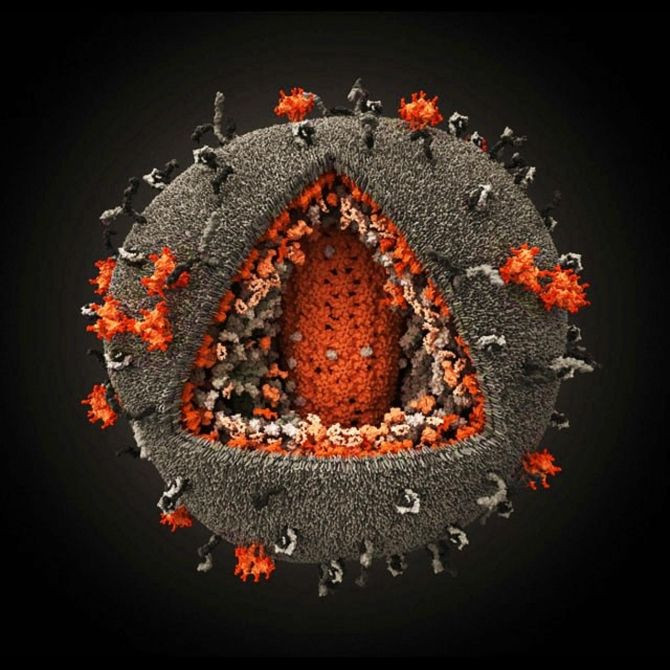First Look Inside HIV’s Coating Reveals Vulnerabilities And Potential Cure For AIDS

The first details of HIV's inner coat could hold clues for future drugs that may no longer target the virus, but instead will attack the protective shell that encases it.
The findings, published in the May 30 issue of Nature, take a closer look at the 4-million-atom structure of HIV's protein shell, also known as the capsid.
"The capsid is critically important for HIV replication, so knowing its structure in detail could lead us to new drugs that can treat or prevent the infection," said Peijun Zhang, senior author of the study and associate professor in the department of structural biology at the University of Pittsburgh School of Medicine. "This approach has the potential to be a powerful alternative to our current HIV therapies, which work by targeting certain enzymes, but drug resistance is an enormous challenge due to the virus' high mutation rate."
Since 1981, almost 1.7 million people in the United States have become infected with HIV, including more than 619,000 who have died from the disease. While there is currently no cure for HIV/AIDS, combinations of drugs can be used to control the viral spread by blocking entrance to cells or prohibiting the virus from making copies of itself. Unfortunately, current treatment options are difficult to handle and other diseases may arise if viral loads aren't under control. But the HIV capsid has always allured scientists as a target for effective drugs.
"The capsid is very sensitive to mutation, so if we can disrupt those interfaces, we could interfere with capsid function," Zhang said. "The capsid has to remain intact to protect the HIV genome and get it into the human cell, but once inside it has to come apart to release its content so that the virus can replicate. Developing drugs that cause capsid dysfunction by preventing its assembly or disassembly might stop the virus from reproducing."
Researcher deciphered the structure using the Blue Waters supercomputer from the University of Illinois. The machine positioned 1,300 proteins into a whole unit that resembled the capsid's structure. This simulation exposed the "seams" of the capsid, or areas the virus uses for assembly and stability; this could offer scientists clues on where to target the most vulnerable regions of the virus.
For years, scientists have struggled to develop effective therapies that could catch up with the fast-mutating virus. The capsid is a new approach that could prove more effective because it's not as likely to develop resistance.
"By using a combination of experimental and computational approaches, this team of investigators has produced a clearer picture of the structure of HIV's protective covering," said Michael Sakalian, program director in the Division of Cell Biology and Biophysics at the National Institute of Health. "The new structural details may reveal vulnerabilities that could be exploited by future therapeutics."
Source: Zhao G, Perilla JR, Yufenyuy EL, et al. Mature HIV-1 capsid structure by cryo-electron microscopy and all-atom molecular dynamics. Nature. 2013.



























